Home - All About Braces - How to Know If You Need Braces

Erick practices orthodontics in our West Jordan Oral Health and Riverton Oral Health offices.
How to Know if You Need Braces
7 Signs You or Your Child Might Need Braces
Teeth crowding happens when there isn’t enough space in the jaw for all teeth to erupt correctly. As a result, teeth can come out at odd angles or can be tucked behind other teeth, which makes them challenging to clean. Even the best brushers and flossers will face an increased risk of tooth decay and gum disease when their teeth are misaligned.
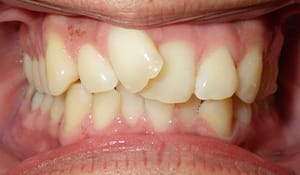
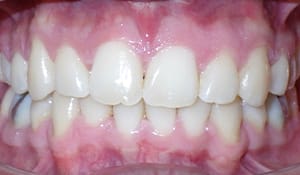
Dental crowding can be the fallout from various environmental, congenital, and behavioral causes. One of the most common behavioral reasons is sucking on a thumb or pacifier beyond the infant and early toddler years. This constant pressure on the teeth can cause them to move out of place, crowding out the rest of the mouth.
Fortunately, crowding is one of the most common reasons for orthodontic treatment and the care plan is well established. If your child has crowded teeth, talk with their dentist about the right time to seek an orthodontic consultation. For some kids, starting phase one treatment early can shorten their overall treatment timeline.
An open bite is identified by an outward slant of the front teeth, resulting in a gap between top and bottom teeth when the jaw is closed. Open bites can interfere with proper chewing and may affect speech.
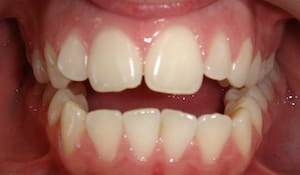
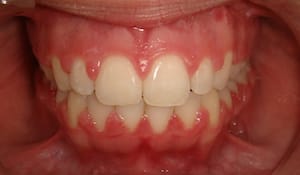
The most common causes are misalignment in the jaw, sucking on a thumb or pacifier, and tongue thrusting (pushing the tongue against the back of the teeth).
When we identify an open bite in childhood, a combination of orthodontic treatment and behavior modification can address both the cause and consequences. A successful early care plan could potentially prevent the need for corrective surgery in the future.
Any time the upper front teeth protrude over the lower front teeth, we call that an overbite. Minor overbites may not require treatment. However, if left untreated, some more extreme overbites can become worse or lead to other problems.
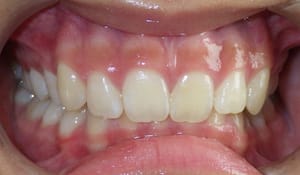
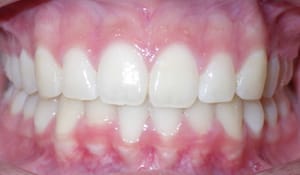
Hypodontia is a common condition in which a patient is missing one or more teeth. Importantly, hypodontia refers to a congenital lack of certain teeth; it does not refer to teeth lost through trauma or behavior. Moreover, because it is congenital there is a genetic component. If you have hypodontia, it’s more likely your child will too.

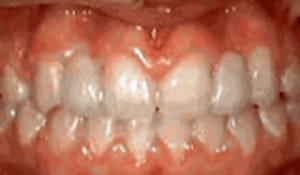
The most common missing teeth are the upper lateral incisors (the teeth between your front teeth and your canines), impacting about two percent of the population. If your child is missing their lateral incisors or any other teeth, our orthodontic team at Families First Pediatric Dental & Orthodontics can offer a number of treatment options.
Whenever a patient’s bottom teeth protrude over the top teeth, we call that an underbite. Just like an overbite, mild cases may not need treatment but can lead to larger problems in the future.
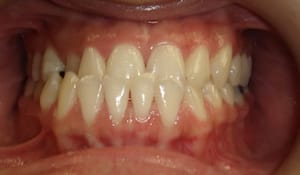

Underbites are estimated to impact between 5% and 10% of the population and can lead to jaw pain, tooth decay, gum disease, and difficulty eating and speaking. Orthodontic treatment can remedy an underbite by adjusting the positioning of the teeth and jaw until they sit more comfortably.
A condition called diastema, commonly called “gap teeth” is one of the most common orthodontic issues. This most often presents as a gap between the front teeth, but can be located anywhere in the mouth. Diastema is incredibly common among children and doesn’t usually require treatment unless it persists after the secondary teeth come in.
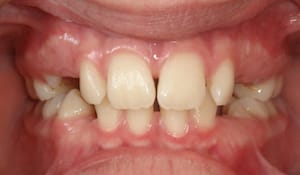
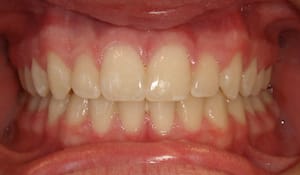
When gaps between teeth persist, it’s usually caused by a mismatch between the size of the jaw and the size of the teeth. Tooth gaps can also be caused by thumb-sucking, tongue thrusting, and gum disease. Many gaps are purely cosmetic and some people are happy with their tooth gap. But more extreme gaps, or gaps in certain locations can lead to tooth decay or bone loss. If you’re unsure whether a tooth gap is problematic, talk with your child’s orthodontist.
In layman’s terms, an overjet is known as “buck teeth” and often confused with a more conventional overbite. In an overjet, the upper teeth protrude over the bottom teeth, just like in an overbite, but they also exit the jaw at an outward angle.
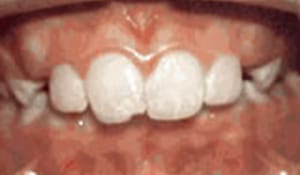
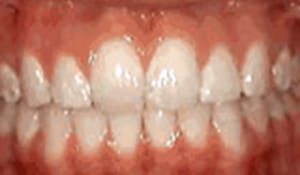
An overjet can be hereditary or can be caused by thumb-sucking, pacifiers, or tongue thrusting. In addition to the cosmetic downside, an overjet can cause problems with eating and speaking and usually benefits from orthodontic treatment.
If you’ve noticed any of these alignment issues — or just want peace of mind about your child’s smile — schedule a complimentary orthodontic consultation below. Or explore the different types of dental braces we offer.
Schedule Your Complimentary Consultation
Frequently Asked Questions
What are the signs that I or my child might need braces?
At what age should my child first see an orthodontist?
The American Association of Orthodontists recommends that children have their first orthodontic evaluation by age seven. Early detection can lead to more effective (and sometimes shorter) treatment plans.
Are braces only for cosmetic purposes?
No, braces not only enhance the appearance of your smile but also improve oral health by correcting bite issues, which can prevent discomfort, tooth decay, gum disease, and chewing difficulties.
How long does orthodontic treatment usually last?
The duration varies based on individual needs but typically ranges from 18 months to 3 years. Our orthodontists can share a specific treatment plan and duration after a free consultation.
What are the alternatives to traditional metal braces?
Alternatives include clear aligners, ceramic braces, and lingual braces. Each option has its advantages, and an orthodontist can recommend the best choices based on your specific treatment needs and lifestyle.
Will wearing braces be painful?
Discomfort after the initial braces fitting and after adjustments is common, but manageable. Tenderness typically subsides within a couple days. Over-the-counter pain relievers can help manage any soreness. Clear aligners work differently, so if discomfort is a big concern, talk with your orthodontist about your options.
How should I care for my teeth while wearing braces?
Maintain regular brushing and flossing, avoid sticky or hard foods, and attend all scheduled orthodontic appointments. These steps will ensure you get the most from your treatment plan as well as the best oral health.
Can Adults Get Braces Too?
Absolutely! About one in four orthodontic patients is an adult and many choose braces or clear aligners to improve their smiles and oral health.